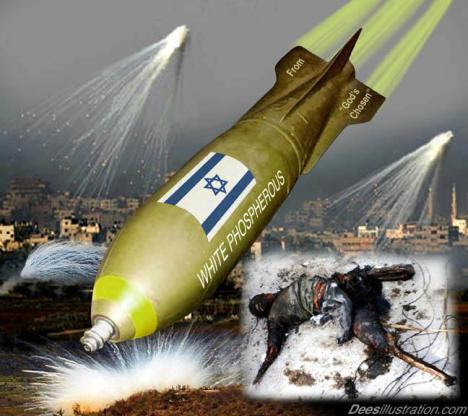Israel’s recurring use of terror on civilians
by alethoBy Bob Finch | January 26, 2009
Insanely disproportionate use of violence against unarmed civilians
“The
stated aim was, as always, to stop the launching of the rockets. The
means: killing a maximum of Palestinians, in order to teach them a
lesson. The decision was based on the traditional Israeli concept: hit
the civilian population again and again, until it overthrows its
leaders. This has been tried hundreds of times and has failed hundreds
of times.” (Uri Avnery “Kill a Hundred Turks and Rest”: The Five-Day War in Gaza March 2008).
Operation Grapes of Wrath ~ Lebanon, in 1996
“Ehud
Barak will be remembered in Israel’s history as the one who introduced
the abuse of innocent civilians as political cards. Barak was probably
not the first Israeli warrior to abuse civilians on a tactical level,
but he was the one who turned it into a central Israeli strategy.
Operation Grapes of Wrath in Lebanon, in 1996, with Barak as an
influential cabinet member, openly targeted civilians, turning them into
refugees to make them put pressure on Beirut’s government. The recent
siege on Gaza follows a similar logic: put pressure on civilians to
achieve political goals. (A clear war crime, it goes without saying.)”
(Ran HaCohen ‘Israel Says ‘No’’ Feb. 2008).
Israelis fire 1,300,000 bullets during first few days of Intifada
“Malka, in an interview with the Israeli paper Ha’aretz on 14 June,
revealed that during the first few days of the intifada, Israeli
occupation soldiers fired 1,300,000 bullets on Palestinian population
centres and other targets. This massive firepower, which had no
operational justification given the Palestinians’ inherently inferior
firepower (they possessed only light firearms and in limited numbers),
showed that the Israeli army was interested more in decimating and
harming the Palestinians and less in ending the violence. According to
Israeli sources, then-Chief of Staff and now Defence Minister Shaul
Mofaz didn’t plan to bring about the end of the conflict. Instead, he
thought he had finally seized the opportunity to “beat and vanquish” the
Palestinians in order to “burn into their consciousness” and make them
“internalise their weakness and inferiority vis-a-vis Israel’s
strength”. Mofaz’s ultimate aim, of which he later convinced Israeli
Prime Minister Ariel Sharon, was to hector Palestinians into
negotiations in a weakened and exhausted state whereby they would have
no choice but to accept Israel’s dictates and demands. The new
revelations, Palestinian officials argue, prove that the escalation of
violence during the first few months of the intifada was, first and
foremost, Israel’s responsibility. “This is what we have been saying all
along that this is not about Israeli security but rather about Israel’s
terrorising the Palestinian people for the purpose of arrogating their
land and rights. Israel is now admitting that,” said Michael Tarazi,
adviser to Palestinian Authority leader Yasir Arafat.” (Khalid Amayreh
‘The second intifada, an Israeli strategy’ July 2004).
Lebanon 2006
“This
intentional and coldly calculated Israeli policy of targeting innocent
Lebanese civilians and civilian infrastructure stems from a
time-honoured, but hardly ever successful, Israeli doctrine of applying
intense “pressure” against a civilian population in order to compel
them, in-turn, to pressure the resistance into submitting to Israeli
dictates, thereby doing Israel’s bidding by proxy. It has been
consistently used against the Palestinians ever since the Nakba of 1948,
and is still applied now in the ongoing barbaric offensive and hermetic
siege against Gaza. Israel may have plagiarized this doctrine from the
legacies of previous oppressors, but it has refined it to a degree that
it no longer raises any moral qualms in most of Israeli society, where
it is widely accepted by the public as a right, even a duty in the fight
for Israel’s “security.” (Omar Barghouti ‘The Massacre at Qana’
August 01 2006); “As Limor and Shelah reveal, in spite of the fact that
the conflict on the ground took place on a very narrow strip of land
(the Israeli border on the south and Litani River on the north), the
Israeli artillery had managed to shoot over 170,000 shells. In
comparison, in the 1973 war while fighting against two strong state
armies over two very large fronts, the Israelis had launched only 53,000
shells. The figures relating to the Air Force are even more striking.
Though less than a few concrete targets were available for the IDF
intelligence, the IAF (Israeli Air Force) had launched as many as 17,550
combat missions, this translates into 520 missions a day, almost as
many as in the 1973 war (605 a day). Yet, in 1973 the IAF was fighting
two well-equipped air forces, it was engaged in a fair amount of
air-to-air combat and a relentless struggle against the latest Soviet
ground-to-air missiles. None of that happened in the Second Lebanon War.
The IAF was engaged solely in hammering the Lebanese soil. It literally
threw and launched everything it had in its disposal, presenting a
merciless method that in places (southern Beirut for instance), had a
similar effect to the infamous 1940s Anglo-American carpet bombardment.”
(Gilad Atzmon ‘Saying NO to the Hunters of Goliath’ August 13, 2007); “That was on Aug. 30,
by which time U.N. teams had identified 359 separate cluster-bomb
sites. Since then, the true dimensions of the problem have become even
clearer: 770 cluster-bomb sites have now been identified. And the
current U.N. estimate is that Israel dropped between 2 million and 3
million bomblets on Lebanon, of which up to a million have yet to
explode.” (Saree Makdisi ‘Israel’s Cluster Bomb War’ Oct. 2006).


No comments:
Post a Comment